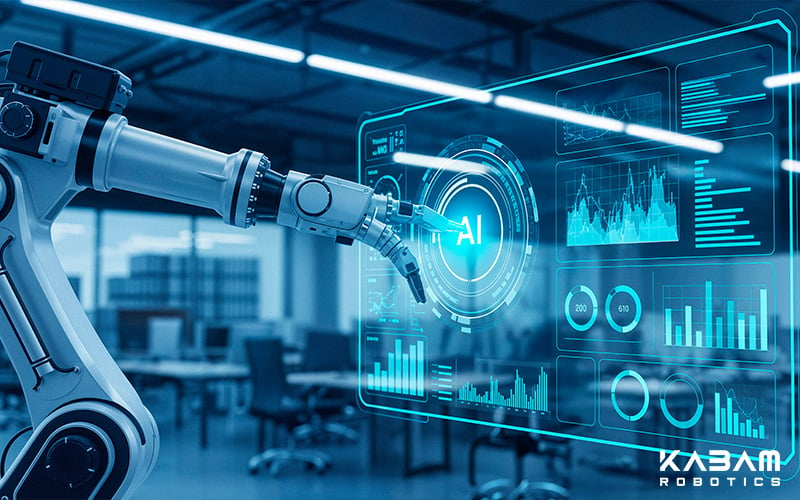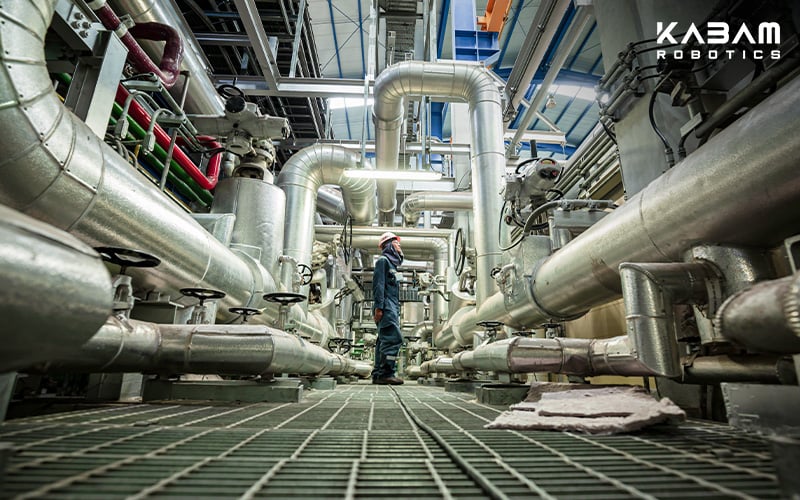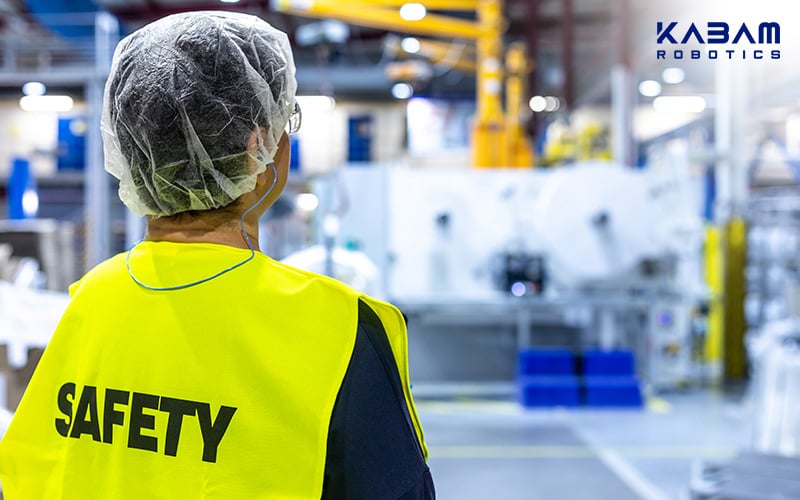Part 1: Introduction
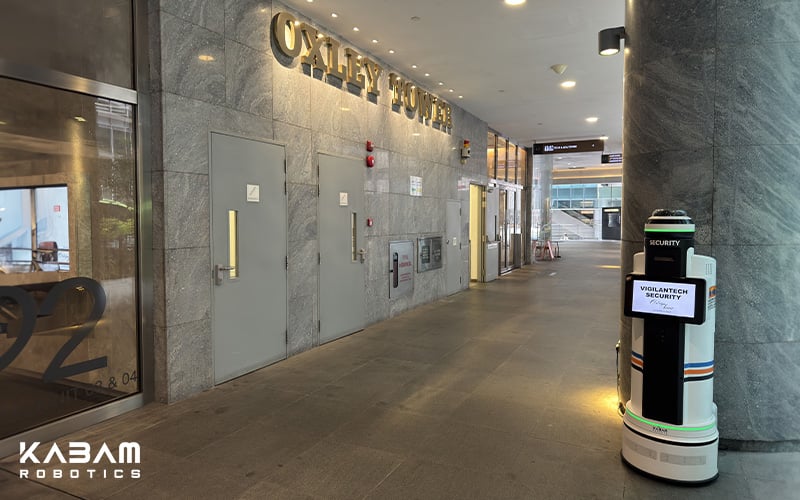
The integration of robotics into security technology offers advanced solutions that enhance efficiency, accuracy, and responsiveness. Traditional security measures, such as human patrols and stationary surveillance cameras, are being transformed by autonomous robotic security systems that can monitor, analyze, and respond to threats in real time.
Companies like KABAM Robotics have long championed this transformation, providing innovative robotics solutions that address modern security challenges. As Singapore continues to position itself as a leader in smart city initiatives, robotics-driven security technology is playing a vital role in shaping safer environments.
This article explores the various ways security robots are modernizing security and what this means for the future of safety and surveillance.
Part 2: The Rise of Robotics in Security
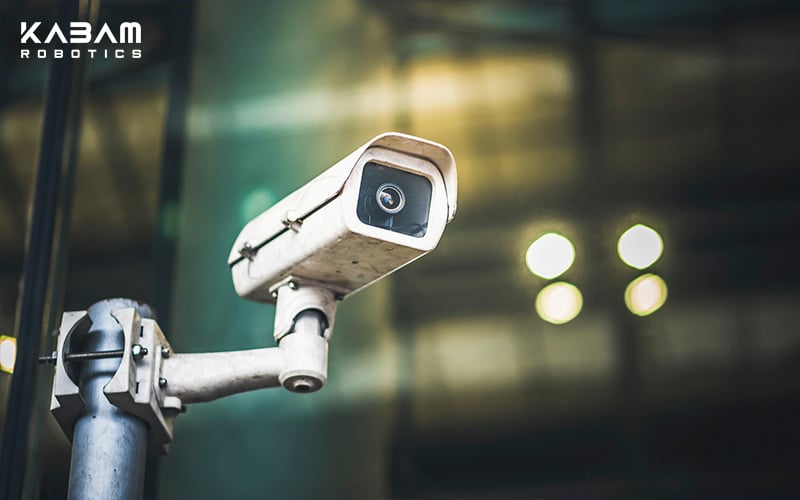
2.1. The Evolution of Security Technology
Security technology has come a long way from traditional manual surveillance methods to sophisticated AI-driven robotic solutions. In the past, security primarily relied on human patrols, stationary CCTV cameras, and alarm systems. While these methods provided a basic level of protection, they were often reactive rather than proactive, with significant limitations in coverage, accuracy, and response time.
With advancements in artificial intelligence, machine learning, and automation, new security technologies have transformed the industry. Today, robotic security systems are capable of autonomous patrolling, real-time data analysis, and proactive threat detection. These systems use high-definition cameras, thermal imaging, and advanced motion sensors to identify potential security breaches before they escalate. AI-driven analytics enable robots to differentiate between normal activity and suspicious behavior, reducing false alarms and improving response efficiency.
KABAM Robotics is one of the pioneers of this evolution, developing state-of-the-art security technologies tailored for modern environments. Our Co-Lab robot, for instance, is designed for indoor surveillance and can be integrated seamlessly with smart building security systems. Conversely, our Halo robots are designed for rigorous outdoor patrolling with all-terrain capabilities. As Singapore continues to embrace smart city initiatives, integrating security robots into existing infrastructure is becoming essential for businesses to ensure safety and efficiency.
2.2. Security Robots vs. Traditional Security Solutions
Traditional types of security technologies, such as human security guards and static surveillance cameras, have long been the foundation of security technology. However, these methods come with limitations, including human fatigue, blind spots, and slow response times. Security personnel can only monitor limited areas at a time, and their effectiveness may be impacted by distraction, exhaustion, or human error. Additionally, static cameras rely on manual monitoring, which can delay response to incidents.
In contrast, robotic security systems offer a more efficient and reliable approach. Security robots provide autonomous surveillance robot capabilities, operating 24/7 without fatigue whilst continuously patrolling and monitoring large areas. They use AI-powered analytics to detect anomalies, identify threats, and send real-time alerts to security teams. Unlike stationary systems, these robots actively respond to changing environments, adapting their patrol routes based on detected risks.
KABAM Robotics’ Co-Lab and Halo robots are prime examples of how automation enhances security technologies and operations. Through the deployment of advanced robotics, these robots help businesses and public spaces in Singapore enhance security measures, reduce operational costs, and improve overall situational awareness.
Part 3: Key Features of Security Robotics
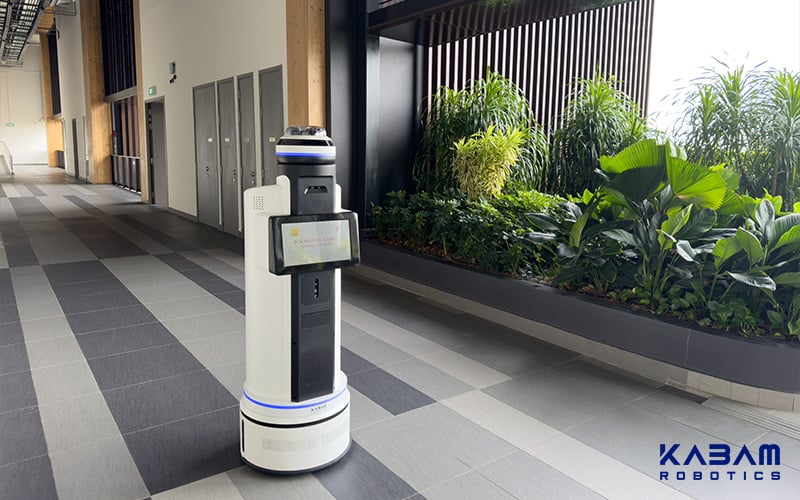
3.1. Autonomous Patrolling and Surveillance
One of the most significant advancements in security technology is the ability of security robots to conduct autonomous surveillance robot patrols. Unlike traditional security personnel who are limited by fatigue, distractions, and coverage areas, security robots operate continuously, ensuring 24/7 monitoring without human intervention.
Equipped with high-resolution cameras, LiDAR, and AI-driven analytics, these robots autonomously navigate complex environments, detecting anomalies and responding to security threats in real time. They can map their surroundings, follow predefined patrol routes, and dynamically adjust based on live data. This adaptability makes them invaluable for securing large-scale facilities such as shopping malls, office buildings, and industrial sites.
When it comes to patrolling and surveillance, KABAM Robotics offers modern solutions for both indoor and outdoor environments through its Co-Lab and Halo robots respectively. While Co-Lab is built for tasks within enclosed environments, such as monitoring access points and detecting intrusions; Halo, on the other hand, fits seamlessly into vast, outdoor spaces, making it ideal for wide-area patrol and cross-terrain navigation. These security technologies enable businesses in Singapore to enhance their security approach, reduce reliance on human personnel, and ensure a proactive approach to threat detection and response.
3.2. Integration with AI for Smarter Security
The integration of AI with security technology has transformed the way security threats are detected and managed. AI-driven security robots can process vast amounts of data in real time, identifying patterns, predicting potential threats, and autonomously responding to security incidents. This capability enhances both the speed and accuracy of security operations, reducing the likelihood of false alarms and improving overall efficiency.
Machine learning algorithms enable security robots to continuously improve their autonomous surveillance robot functions by analyzing past incidents and refining their threat detection capabilities. AI also enhances facial recognition, anomaly detection, and predictive analytics, allowing for proactive security management.
KABAM Robotics’ Smart+ platform is a prime example of how AI-powered robotic security systems seamlessly integrate with building infrastructure and existing security protocols. It allows security robots to communicate with smart building security systems, surveillance cameras, and alarm systems, ensuring a cohesive and intelligent security network.
By adopting AI-powered robotics solutions, businesses in Singapore can significantly strengthen their security operations. These advancements not only enhance threat detection and response times but also reduce manual workload, optimizing resources and improving the overall reliability of security measures across various environments.
Part 4: Benefits of Robotics in Security Technology

4.1. Enhanced Precision and Accuracy
One of the greatest advantages of using security technology powered by robotics is the enhanced precision and accuracy it brings to security operations. Unlike human personnel, who may experience fatigue, distractions, or limitations in perception, security robots operate with unwavering consistency, ensuring continuous monitoring and precise threat detection.
Equipped with high-resolution cameras, thermal imaging, and AI-powered analytics, autonomous surveillance robots can identify security threats with remarkable accuracy. These robots can detect suspicious behaviour, unauthorised access, or unusual environmental changes, such as sudden temperature fluctuations that could indicate fire risks. By using AI-driven analysis, they can filter out false alarms, ensuring that only legitimate threats trigger responses, reducing unnecessary disruptions and improving overall security efficiency.
KABAM Robotics’ security robots utilize advanced robotic security systems that integrate seamlessly with surveillance cameras and access control systems. This allows for real-time monitoring, immediate alerts, and rapid decision-making when a potential threat is detected. These capabilities are particularly valuable in large-scale environments such as office buildings, shopping malls, and critical infrastructure, where human oversight alone may not be sufficient.
By implementing precise and intelligent robotics solutions, businesses in Singapore can significantly strengthen their security measures, ensuring a proactive approach to threat detection and incident prevention.
4.2. Cost-Effectiveness and Resource Optimization
Implementing security technology powered by robotics provides a cost-effective solution for businesses looking to enhance security while optimizing resources. Traditional security operations often require a large workforce, leading to high labour costs, shift rotations, and potential inefficiencies. Security robots help mitigate these challenges by automating routine surveillance tasks, reducing the need for extensive human intervention.
KABAM Robotics’ robotic security systems offer round-the-clock monitoring without fatigue, ensuring uninterrupted surveillance at a fraction of the cost of maintaining a large security team. These robots can patrol vast areas, detect anomalies, and alert human personnel only when intervention is required. This strategic deployment of resources allows security teams to focus on critical decision-making rather than routine monitoring.
Additionally, autonomous surveillance robots help businesses lower costs associated with security breaches, property damage, and safety incidents. Their ability to detect threats early minimizes financial losses from theft, vandalism, or operational disruptions. Furthermore, integrating security robots with existing systems, such as CCTV and smart building security systems, enhances overall security without requiring significant infrastructure upgrades.
By adopting robotics solutions, businesses in Singapore can improve operational efficiency whilst maintaining high-security standards, ensuring long-term cost savings and a more robust security strategy.
Part 5: Robotics in Action: Real-World Applications
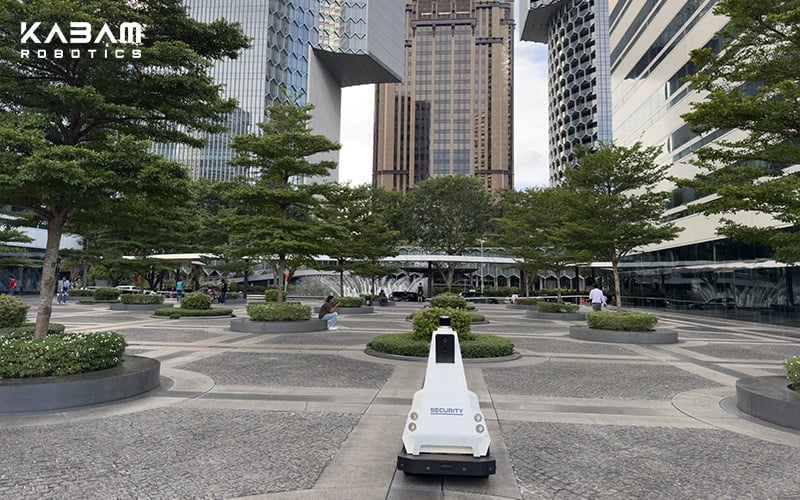
5.1. Security Robots in Public Spaces
In public spaces such as airports, shopping malls, and transportation hubs, the role of security robots is becoming increasingly vital in enhancing safety and operational efficiency. These areas often experience high foot traffic and face unique security challenges, such as monitoring vast, dynamic environments and quickly responding to incidents. Security technologies that are powered by robotics are ideal for this purpose, as these robots can autonomously patrol these spaces, providing continuous, real-time surveillance without the limitations of human fatigue or lapses in attention.
KABAM Robotics’ Co-Lab and Halo robots are designed to meet the demanding security needs of public spaces. Co-Lab, with its advanced sensors and AI capabilities, is perfect for indoor environments like shopping malls or airport terminals, while Halo, on the other hand, is designed to navigate vast outdoor terrains and environments, such as tourist attractions like Gardens by the Bay.
Case Study: Security Robotics in Public Spaces
In Singapore, both Co-Lab and Halo have been deployed in several high-traffic public spaces, including shopping malls and transportation hubs, to enhance safety and improve operational efficiency. Singapore’s rapid urbanization and growing reliance on technology have created a need for advanced security technologies that can handle both the scale and complexity of modern public spaces.
For instance, at a well-known shopping mall in central Singapore, KABAM’s Co-Lab robot has been integrated into the mall’s security operations. Co-Lab autonomously patrols the expansive retail floors, including access points, elevators, and corridors, to monitor for suspicious activity. Equipped with a range of sensors — such as thermal imaging, motion detection, and facial recognition — Co-Lab can detect unusual patterns like unauthorized access or loitering, and immediately alert security personnel. It can also provide real-time surveillance data, such as crowd density and movement patterns, which helps mall security teams proactively manage the flow of people and address any safety concerns quickly.
On the other hand, the Halo robot was deployed at a local transportation hub, where it plays a critical role in monitoring the large open spaces of the station. As Singapore’s transportation hubs are major transit points for both locals and tourists, ensuring the safety of commuters is of utmost importance. Halo navigates the hub’s sprawling outdoor areas, checking for any suspicious packages, unauthorized access, or potential hazards. With its sturdy design, Halo can handle the challenges of outdoor environments, such as uneven surfaces or exposure to the elements, ensuring reliable performance in all weather conditions.
5.2. Use of Robots in Private and Commercial Properties
KABAM Robotics’ security robots are also enhancing security in private and commercial properties across Singapore. These robots provide continuous surveillance, monitoring access points, and patrolling premises autonomously. They integrate seamlessly with existing security systems, such as CCTV cameras, video management systems (VMS), and Physical Security Information Management (PSIM) platforms, offering a comprehensive security solution.
For example, in commercial office buildings, Co-Lab robots patrol common areas and restricted zones, alerting security teams to potential threats like unauthorized access or suspicious activity. Halo, designed for outdoor use, ensures the security of perimeters, parking lots, and loading docks, even in challenging weather conditions.
By deploying robotic security systems, businesses benefit from 24/7 monitoring without relying on human presence, reducing labor costs and human error whilst improving overall security management. This integration optimizes resource allocation, streamlining the security process and enhancing operational efficiency.
FAQs
1. How do KABAM’s robots integrate with existing security systems?
KABAM’s Smart+ platform facilitates seamless integration between robots, existing security infrastructure, and backend monitoring systems. It also centralises all alerts and monitoring, enabling seamless management and real-time control of security and facility operations from a single interface for ease of use. This ensures smooth communication and coordination, optimizing security operations. By connecting with technology and security systems, it enhances efficiency, enabling real-time data sharing and proactive responses to potential threats across the facility.
2. What environments are suitable for KABAM’s Co-Lab and Halo robots?
KABAM’s Co-Lab robot is perfect for indoor environments, including smart building security systems and corporate surveillance. Halo, on the other hand, is tailored for outdoor security, providing all-terrain capabilities that make it ideal for large commercial spaces, ensuring comprehensive coverage across diverse environments.
3. Why is security important in information technology?
With the rise of IoT and AI-driven security systems, it is even more important to safeguard sensitive data and operational integrity. Security robots contribute to this by enhancing security services through the integration with digital security networks.
The future of security technology is being shaped by robotics, offering smarter, more efficient, and adaptable solutions. KABAM Robotics is leading this transformation with cutting-edge solutions like Co-Lab, Halo, and Smart+, revolutionizing security robot applications across industries.
As Singapore continues its push toward a technology and security-driven smart nation, the role of robotics in security technologies will only grow. It is no longer limited to static surveillance; it now involves AI-driven autonomous surveillance robots, offering proactive, data-driven security strategies.
For businesses looking to enhance their security services, KABAM Robotics provides industry-leading robotic security systems that improve surveillance, incident response, and overall security efficiency.
For more information on our services, please contact us today.

